Файл: Учебное пособие по английскому языку для практических занятий студентов 2 курса.docx
ВУЗ: Не указан
Категория: Не указан
Дисциплина: Не указана
Добавлен: 23.11.2023
Просмотров: 775
Скачиваний: 9
ВНИМАНИЕ! Если данный файл нарушает Ваши авторские права, то обязательно сообщите нам.
2) My name's Pedro and I (1)(work) for a pharmaceutical company in Madrid. Most days I (2)(work) from 8.30 until 17.00, but on some days I (3)(stay) late in order 0 finish a job. At the moment I (4)(develop) a new line of over-the-counter drugs. We (5)(start) our first series of trials in two months' time, so there's a lot of last-minute work. I already (6) _______ (have) a Bachelor of Sciences degree in Biochemistry, and I (7)_________ (start) a Masters course next autumn.
6.Put the words in the sentences into the order:
-
design / Civil engineers / and / large buildings / train stations / such / multi-storey car parks / as / build / tall structures -
the theory of engineering / to analyse / Engineers / to understand / and / use / maths / materials and structures -
was / the television / The entire / Neil Amstrong / watching / on the day / on / landed / world / the moon -
they / computers / need to program / because / have to use / Engineers / process information / and
5. in 1990 / new / was introduced / A / approach / pollution control / in European Union / of integrated
6. in its / decided / UK enterprise / cars / German factory / and / Ford / to its / to manufacture / deliver them / for sale
7. comfortable / when / Output / is improved / conditions / are made / more / for workers
8. the new / held / Personal / to launch / a special party / They / Communications Computer
9. Remarkable innovations / transportation / products and services / have resulted in / and / communications / new / in manufacturing
10. have / a wide range of / computers / applications / Currently / for businesses
11. and / weather patterns / send it / Satellites / on / collect data / back to earth
12. laptops / These / the time / batteries / most of / run on / will
13. with / the world / The children / to go / our machines / are going / online / of
UNIT 2
MECHANISMS AND MATERIALS IN ENGINEERING
“They know enough who know how to learn”
Henry Brooks Adams (1838 –1918),
an American novelist, journalist,
historian and academic.
LEAD-IN
1. Identify these simple mechanisms. Try to explain the principles on which they operate.
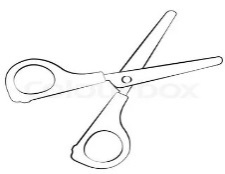
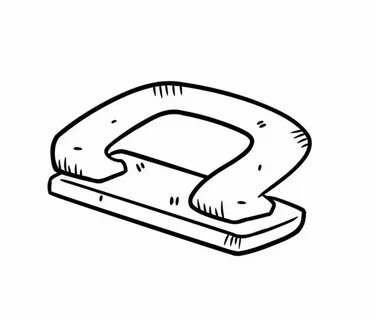
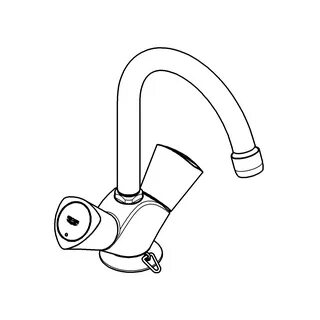
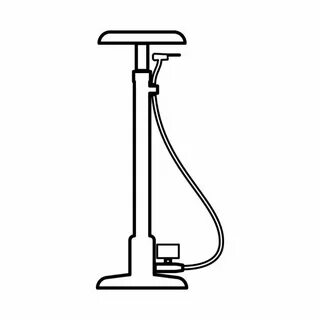
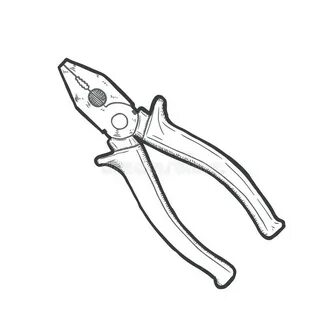
2. Make compound nouns using the words in the box. There may be more than one possible answer.
| activity car degree description experience page plan qualification technician vitae |
1. apprentice - technician 6. curriculum
2. blog 7. engineering
3. business 8. job
4. career 9. leisure
5. company 10. work
VOCABULARY
-
Read and learn the following words.
| branch - отрасль transmission - передача, коробка передач mechanism – механизм working machine - станок kinematic – кинематический machine unit - машинный агрегат apply - применять therefore - поэтому; следовательно feeder - питатель, подающий механизм property - свойство | actuator - исполнительный механизм converter - преобразователь gaseous body - газообразное тело conversion - превращение acting force - действующая сила thermal physics - тепловая физика liquid body - жидкое тело deal with - иметь дело с чем-либо interrelation - взаимоотношения productivity - производительность inherent - присущий location - размещение |
-
Read the following words and word-combinations. Give their Russian equivalents. Use them in sentences of your own.
Strength of materials, facilitate, actuator, participation, location, deal with, acting forces, executive forces, liquid, inherent, extend, subdivide, production engineering, apply, material-working machine, transmission, simulate, feeder, gaseous body, therefore, consider, intend for.
-
Match the words and phrases in column A with those in column B
| А | B |
| 1. machine elements 2. branches of engineering 3. automatic counts 4. converter 5. transmission 6. replace 7. automatic - machine- device 8. sorter of machined objects 9. means 10.interrelation | a. замещать b. средства c. взаимоотношение d. автоматический приборный механизм e. сортировочное устройство f. детали машин g. отрасли инженерии h. коробка передач i. автоматический подсчет j. преобразователь |
4. Form words by means of the following prefixes or suffixes and translate them into Russian. Give your own examples.
-action: consider
-ly: general, final
-ion: rotate, act, direct
-al: rotation, dimension
-mis: understand
-ex: change
-ant: distance
-
Build up a list of similar words useful in your technical field. Check them in a dictionary or online search engine before you write them in the box.
| proof | resistant |
| fireproof, bulletproof, ovenproof (dish), childproof (locks) | fire resistant, water resistant, stain resistant, shock resistant, corrosion resistant |
Note use of the hyphen: The door is fire resistant. It's a fire-resistant door.
A fireproof / fire-resistant door = a door which resists fire; a door which does not allow fire to pass through it; a door which stops fires from spreading.
Note: proof is generally stronger than resistant; for example, a waterproof jacket is probably guaranteed to keep out all water, but a water-resistant jacket may not be.
READING
-
Read and translate the text.
ENGINEERING MECHANISMS AND MATERIALS
Mechanism – is a system of bodies intended for conversion of motion of one or several bodies into the required motion of other ones. In engineering, a mechanism is a device that transforms input forces and movement into a desired set of output forces and movement. Mechanisms generally consist of moving components. By the functional purpose all mechanisms are subdivided into the following kinds:
1. Mechanisms of engines and converters.
2. Transmissions.
3. Executive mechanisms (actuators).
4. Mechanisms of control and regulation.
5. Feeders, transporters, sorters of machined objects.
6. Mechanisms of the automatic count, weighing and packing.
The mechanisms which are included in the structure of a machine can incorporate firm, liquid, gaseous bodies, electrical and magnetic devices, which work according to the basic principles of mechanics, thermal physics, electrical engineering and electronics. Therefore, the Theory of Machines and Mechanisms (TMM) is the science studying the structure, kinematics and dynamics of mechanisms in connection with their analysis and synthesis. All problems of the theory of mechanisms can be divided into two groups. The first group of problems is connected with the research of structural, kinematic and dynamic properties of mechanisms, i.e. with their analysis. The second group of problems deals with the design of mechanisms with the predetermined structural, kinematic and dynamic properties for realization of required movements, i.e. with the synthesis of mechanisms. The mechanism’s movement depends on their structure and applied forces. Therefore, in the study of the theory of mechanisms, it seems to be convenient to divide all problems of mechanisms’ analysis into two parts:
1. Structural and kinematic analysis.
2. Dynamic analysis of mechanisms.
The purpose of structural and kinematic analysis of mechanisms is to study the mechanism’s structural theory and research the motion of mechanisms from the geometrical point of view, without the consideration of the forces causing this motion. The purpose of dynamic analysis is to study the methods of force definition, acting on the elements, forming a mechanism during their motion, and to study the interrelation between the motion of the elements, their masses and acting forces.
Moreover, there are, it is said, more than 50,000 materials available to the engineer. In designing a structure or device, how is the engineer to choose from this vast menu the material which best suits the purpose? Mistakes can cause disasters.
During the Second World War, one class of welded merchant ship suffered heavy losses, not by enemy attack, but by breaking in half at sea: the fracture toughness of the steel — and, particularly, of the welds was too low. More recently, three Comet aircraft were lost before it was realized that the design called for a fatigue strength that — given the design of the window frames — was greater than that possessed by the material. You yourself will be familiar with poorly designed appliances made of plastic: their excessive ‘‘give’’ is because the designer did not allow for the low modulus of the polymer. These bulk properties are listed in Table 1, along with other common classes of property that the designer must consider when choosing a material.
Table 1
Classifications of engineering materials
| Metals and alloys | Iron and steels Aluminium and its alloys Copper and its alloys Nickel and its alloys Titanium and its alloys |
| Polymers | Polyethylene (PE) Polymethylmethacrylate (acrylic and PMMA) Nylon, alias polyamide (PA) Polystyrene (PS) Polyurethane (PU) Polyvinylchloride (PVC) Polyethylene terephthalate (PET) Polyethylether ketone (PEEK) Epoxies (EP) Elastomers, such as natural rubber (NR) |
| Ceramics and glasses* | Alumina (Al2O3, emery, sapphire) Magnesia (MgO) Silica (SiO2) glasses and silicates Silicon carbide (SiC) Silicon nitride (Si3N4) Cement and concrete |
| Composites | Fiberglass (GFRP) Carbon-fiber reinforced polymers (CFRP) Filled polymers Cermets |
| Natural materials | Wood Leather Cotton/wool/silk Bone |
More engineering components are made of metals and alloys than of any other class of solid. But increasingly, polymers are replacing metals because they offer a combination of properties which are more attractive to the designer. And if you’ve been reading the newspaper, you will know that the new ceramics, at present under development worldwide, are an emerging class of engineering material which may permit more efficient heat engines, sharper knives, and bearings with lower friction. The engineer can combine the best properties of these materials to make composites (the most familiar is fiberglass) which offer specially attractive packages of properties. And — finally — one should not ignore natural materials like wood and leather which have properties which — even with the innovations of today’s materials scientists — are hard to beat.
-
Find out the English equivalents in the text for the given words and word-combinations.
Превращение, совместно с, развивать, механизм, прибор, кибернетический, основa, питатель, геометрический, взаимоотношение, замещать, производительность, дисциплина , машина-двигатель (электрогенератор), выполнять, контрольно-управляющая машина, автоматическая линия, тепловая физика, свойство, физический труд, соединять, обеспечивать, методы проектирования.
-
Match words and word combinations with their synonyms.
10)sharp | a) acute b) trader c) motor d) to allow e) melting f) to demand g) mechanism h) transformation i) rule j) to tolerate |
-
Match the words in column A with their definitions in column B:
| A | B |
|
|
|
|
|
|
|
|
|
|
|
|
|
|
|
|
|
|
|
|
|
|
-
Give definitions to the following words and phrases.
1. mechanism
2. gaseous bodies
3. material
4. to ignore natural materials
6. automatic device
7. to be hard to beat.
8. appliance
-
Match the phrases in column A with those in column B
| A | B |
| 1. From the point of view of functions… 2. The working machines… 3. The purpose of creating of machines is… 4. The mechanism movement … 5. The purpose of dynamic analysis… 6. It is the science… | a) to make worker’s manual labour easier. b) studying machines. c) we can classify all mechanisms into 6 groups. d) is to study the methods of force definition, interrelation between elements’ motion. f) are subdivided into 2 groups. g) depends on their structure and applied forces. |
7. Rewrite these sentences to give the same meaning.
1. Steel cable has good tensile strength. -+ Steel cable is very strong in tension.
2.Concrete has high compressive strength. -+ Concrete is ...
3. Nylon is extremely strong in tension. -+ Nylon has ...
4. This metal has excellent torsional strength. This metal is ...
5. This steel is very strong in compression. -+ This steel has …
6.Kevlar has very good shear strength. -+ Kevlar is …
-
Answer the following question according to the text.
-
What is a mechanism? -
What are the different types of mechanism? -
What mechanisms do we use every day? -
What is the most important engineering material? -
What is the classification of engineering materials? -
What are the most important engineering materials?
-
Prepare the retelling of the text.
10. Work in pairs.
1. Imagine that you are at the exam in TMM (Theory of Machines and Mechanisms). One of you is a student, the other one is a teacher. The teacher asks you about the main concepts of TMM.
2. You are a group of students visiting the plant. The mechanical engineer shows you different types of machines. You are interested in them and ask him detailed questions about each machine.
3. Create your own machine. Your task is to make up an advertisement for this machine.
SPEAKING
-
Read the text and fill in the gaps with the words from the list:
| retake examiner unfriendly underestimated overcrowded\crowded conductor useless luckily disbelief backwards disappointed |
THE DRIVING TEST
I knew I would have to 1) … my driving test as soon as I saw the 2) … He didn’t even say “hello” and seemed very 3) … I was a little bit late I suppose as I had slightly 4) … how long it would take me to get there. As usual in this 5) … city all the buses were packed, and I had had to wait more than twenty minutes before a 6) … would let me get on a bus. I knew apologizing would be 7) … so I just got in the car. 8) … I wasn’t feeling particularly nervous, but this horrible man stared at me in 9) … as I began to drive off. I put the car into gear, but it went 10) … so fast I couldn’t believe it straight into the wall. I was so 11) … when he told me I had failed that I thought I might cry.
-
We can describe the properties of materials in a variety of ways.
| present simple active | this material resists heat; it weighs very little |
| can / can't | you can stretch it; it can / can't be bent easily |
| active with passive meaning | it bends easily (= it can be bent easily): it burns easily (= it can be burnt) |
| without -ing | it absorbs a blow without bending (= but it doesn't bend) |